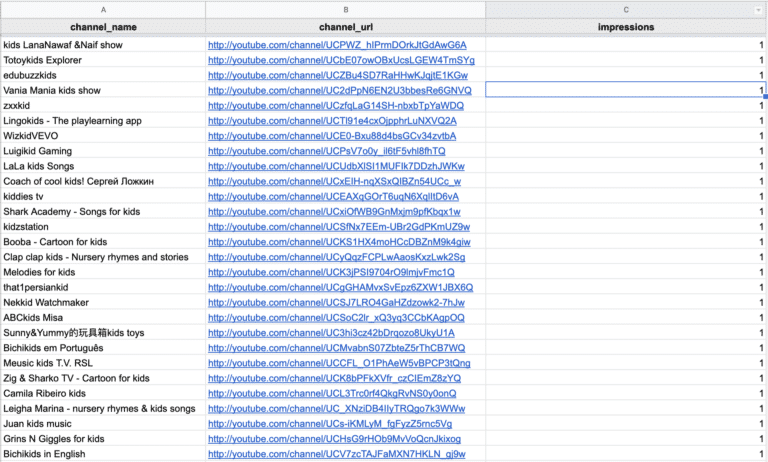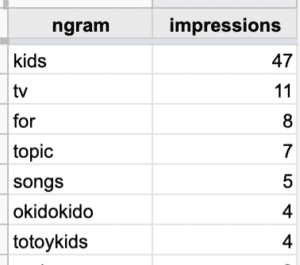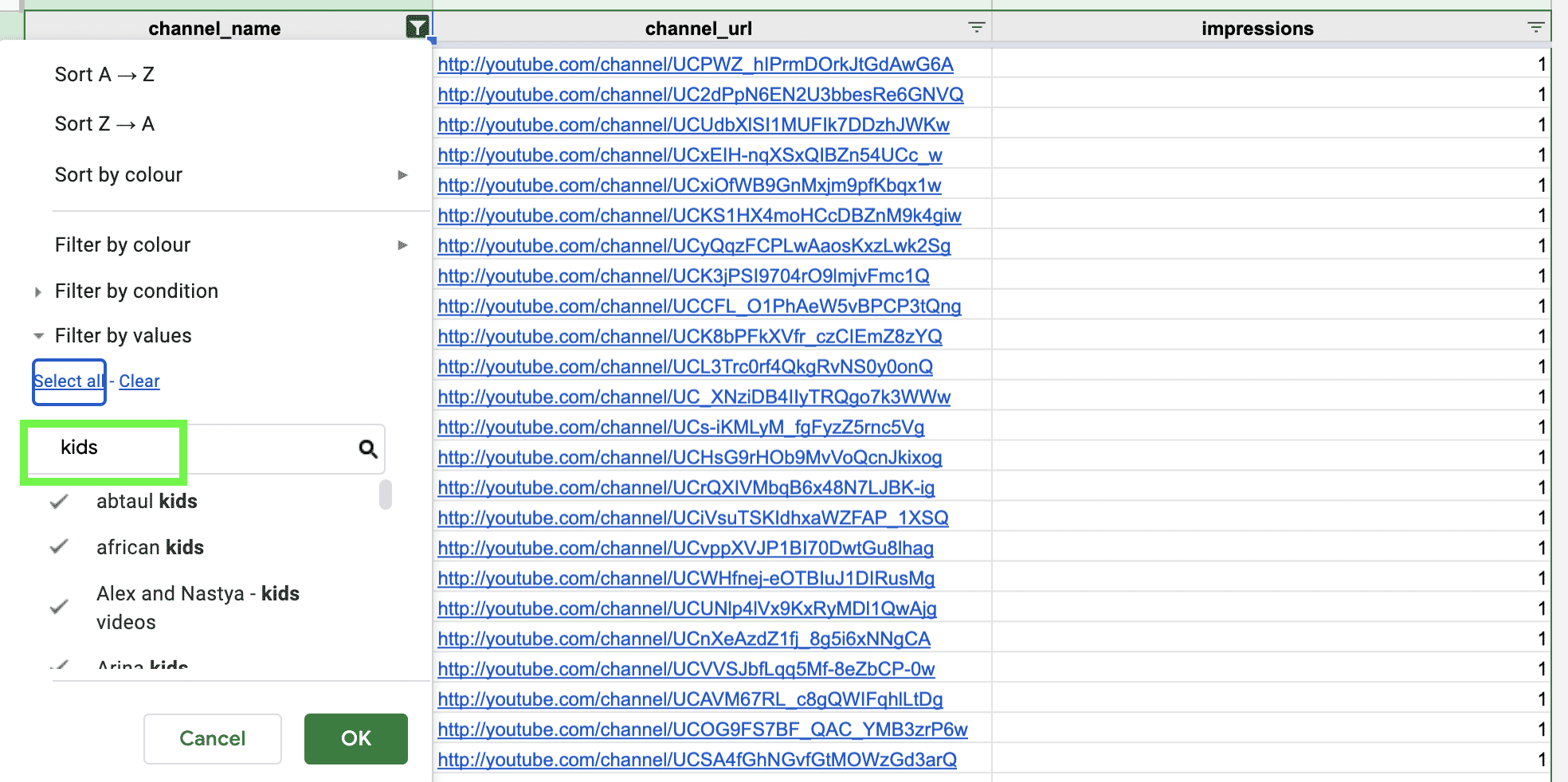Join
"The Marketing Mixtape"
Get the latest digital marketing insights straight to your inbox.
Reduce tenfold the time sunk into the optimisation process

Step one: export the information from each of your different accounts about all channels where your ads were displayed.
In the following table, you can see a small sample of channels that have generated just a single impression. All of these channels fall outside of our targeted audience and are a source of wasted spend. We want to exclude them, but to do so individually would be excruciating.

Step two: run an n-gram analysis to associate impressions with keywords from channel titles.
In our current example, we have decided to look at unigrams (or 1-grams).

Step three: analyze the n-grams you have chosen and assess whether or not they are relevant to your goals.
In the fictitious example we’re looking at, we find that channels containing the unigram “kids” have generated 47 undesired impressions. Bear in mind that in the context of real campaigns, these numbers are likely to be much higher, often upwards of 10’000 impressions or more.
Step four: filter out and automate the exclusion of the n-grams that you decide are toxic to your YouTube campaigns.
In this example, this will mean excluding all 47 channels that contain the unigram “kids” which have been capturing large numbers of impressions but do not fall within our target audience. To do this, go back to the tab with the raw data, filter out all the channel names that contain the unigram “kids”, and exclude them in bulk!

The simplicity of such an n-gram analysis is deceptive. At scale, this represents a truly powerful tool to help you break down your data, optimise your impressions, and efficiently manage your YouTube campaigns.
At comtogether, we automate everything except the part where we export the data and decide which n-grams are toxic for our clients’ goals. The n-gram analysis allows us to reduce tenfold the time sunk into the optimisation process of a Google Ads account. A job that would otherwise take fifty+ hours takes us less than five.
This is just one of many creative methods that we use to optimise our workflow and guarantee optimal results for our clients.
If you have any questions on the nitty-gritty of YouTube campaigns, toxic channels, n-gram analysis, or anything else related to the world of online marketing, don’t hesitate to get in touch. We are here to help.
You want to learn more about Google Ads ? Discover our Whitepaper ! 👇
Get the latest digital marketing insights straight to your inbox.
